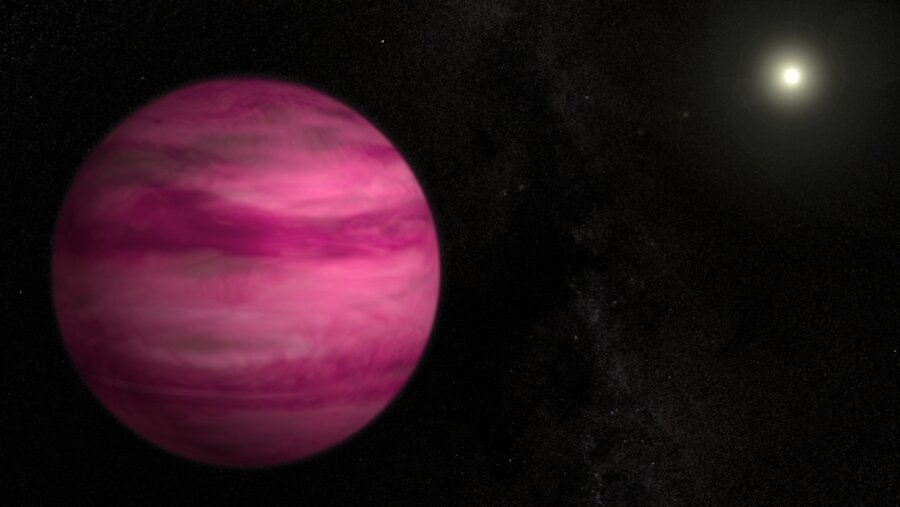How a pink planet is shaking up planet-formation theory
Loading...
Some 57 light-years away from us is pink planet – a “dark cherry blossom” color, somewhat deeper and richer in red hue than Jupiter. Its also a bit bigger than Jupiter, about four times that planet’s size.
In fact, the exoplanet, called GJ 504b, after the GJ 504 star it orbits, sounds a lot like a vamped-up Jupiter, including the fact that this distant planet is about 9 times as far from its star as is Jupiter from the sun. That, though, is where the problem begins: this massive planet far from its star could revise conventional models of how gas giants are formed.
According to the core-accretion model, the standard model for large-planet formation, Jupiter-like planets begin in a gas-rich disk of debris that rings a new star. Once a core of asteroid debris accumulates enough mass, its gravitational pull can tug in more and more gas from the disk. And the end of that process is a gas giant.
But that model can explain the formation of big planets out to about Neptune’s distance from the sun – about 30 times Earth's average distance from the sun, or 30 astronomical units (AU). The new planet, problematically, is at an estimated distance of 43.5 AU from its star.
"This is among the hardest planets to explain in a traditional planet-formation framework," said Markus Janson, a Hubble postdoctoral fellow at Princeton University in New Jersey, in a statement. "Its discovery implies that we need to seriously consider alternative formation theories, or perhaps to reassess some of the basic assumptions in the core-accretion theory."
The findings are part of the Strategic Explorations of Exoplanets and Disks with Subaru (SEEDS) project, a five-year initiative begun in 2009 aimed at directly imaging planets outside our solar system using the Subaru Telescope on Mauna Kea, Hawaii. That project looks to expand exoplanet research beyond just detection to categorization, examining factors such as the planet’s luminosity, temperature, atmosphere, and orbit.
Last month, astronomers using the NASA/ESA Hubble Space Telescope for the first time determined the true color of a planet outside our solar system, pinpointing exoplanet HD 189733b as a high-definition-like azure blue, perhaps the result of an atmosphere that could be laced with glass rain, the scientists said.








